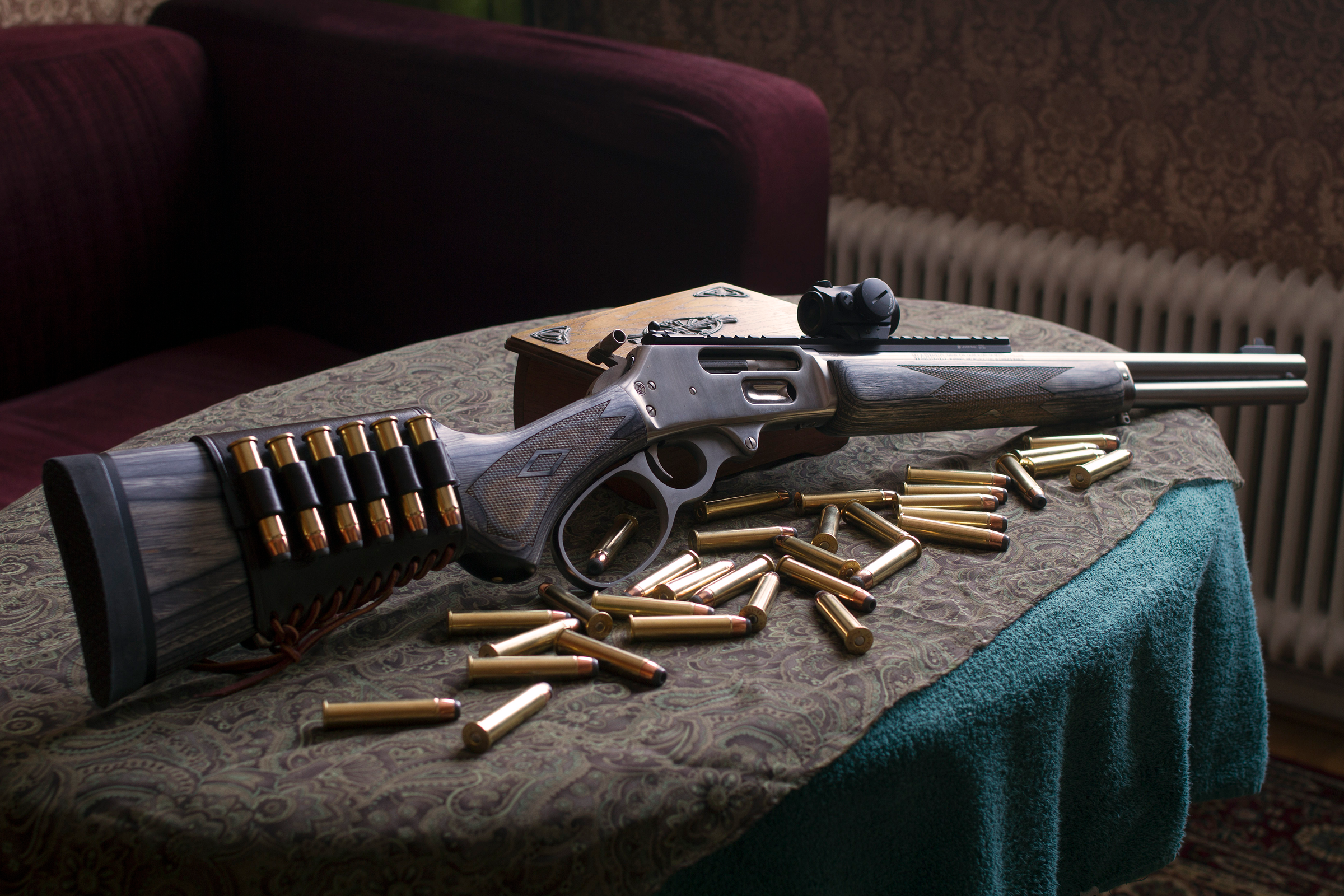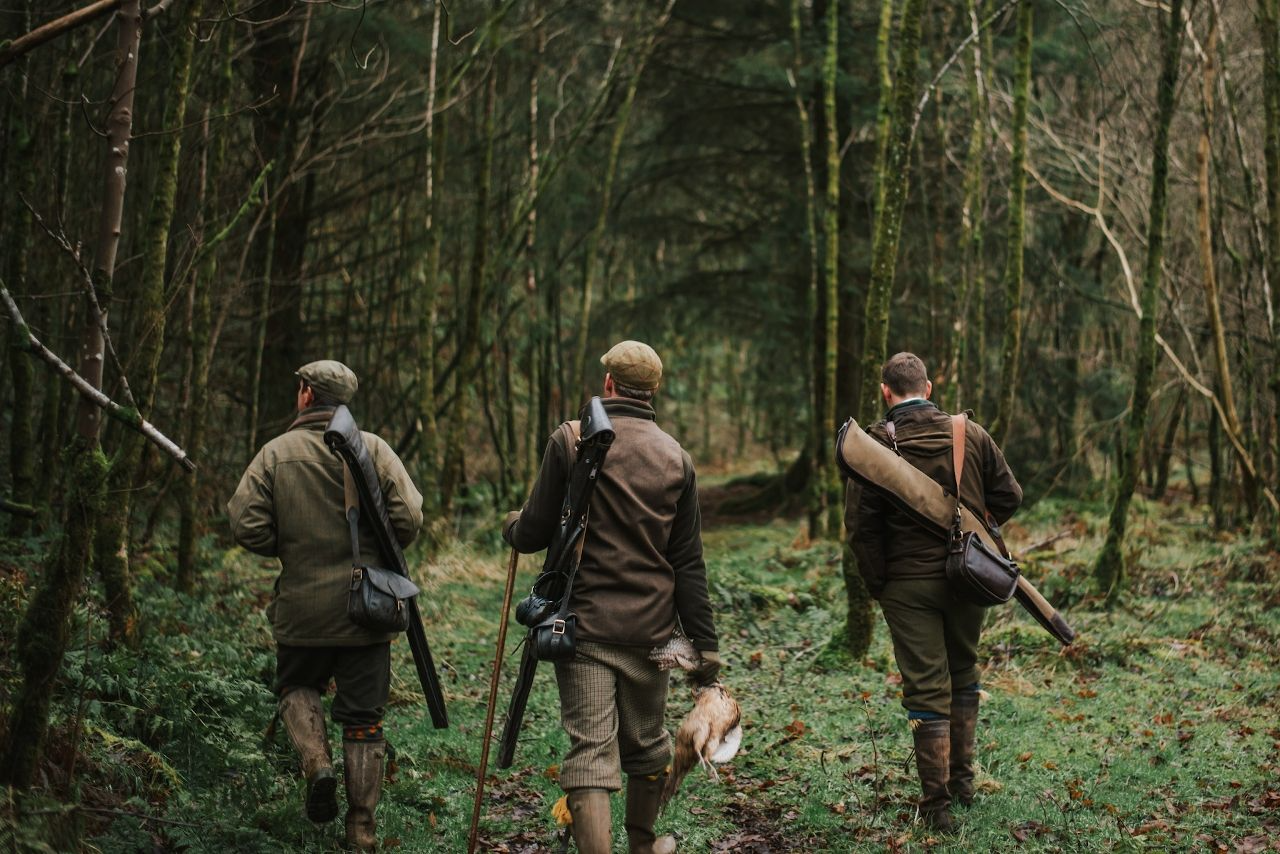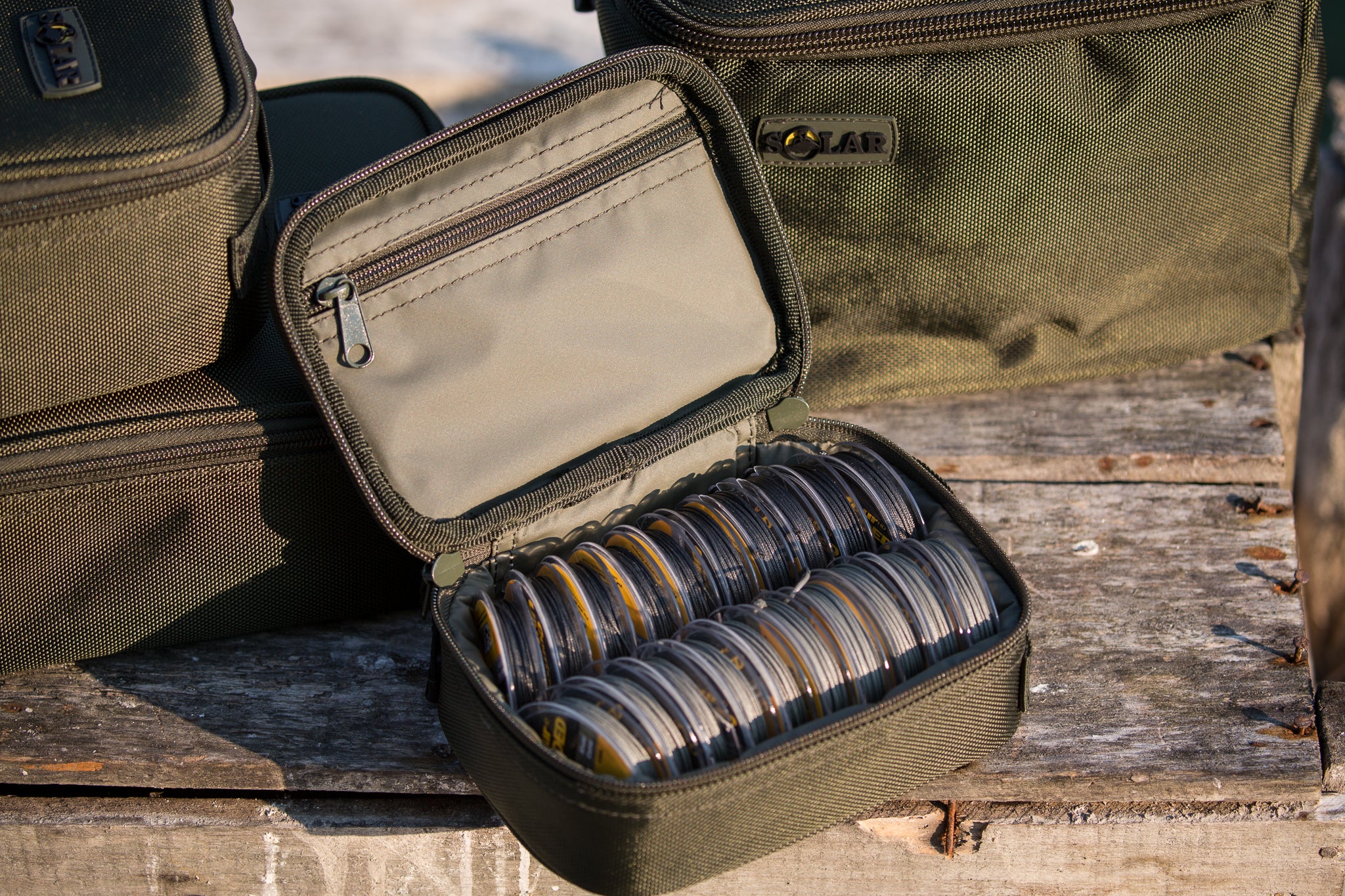When it comes to angling, the allure of winter fishing is unique in its own right. For seasoned anglers and novices alike, the challenge and serenity of casting a line in the icy waters of winter can be an exceptionally rewarding experience. In this article, we will delve into the reasons why winter fishing stands out, emphasizing the importance of staying warm in this chilly pursuit, and introducing the MECE approach to optimize your winter fishing escapades. So, without further ado, let's explore the world of winter fishing.
Staying warm on the ice: a guide to essential winter fishing clothing and gear
Introduction
Winter fishing offers a distinctive charm that sets it apart from other fishing seasons. There's a sense of solitude and tranquility that comes with the snow-blanketed landscape and the serene frozen lakes. Unlike the hustle and bustle of summer fishing, winter fishing allows you to connect with nature on a more profound level. It's a time when you can truly immerse yourself in the beauty of the great outdoors, undisturbed by the usual crowds.
Winter fishing is a true test of an angler's skill. The cold waters provide a unique challenge, as the fish are less active and tend to be deeper in the water. This means you need to employ different techniques and strategies to entice them. Ice fishing, in particular, requires you to drill a hole in the ice, drop your baited hook, and wait patiently. It's a waiting game that demands precision, patience, and a keen understanding of the underwater ecosystem.
While the fish may be less active during the winter months, there are still plenty of opportunities to catch a variety of species. In some regions, you can find fish like trout, pike, perch, and walleye thriving beneath the icy surface. These species offer a unique challenge, each requiring specific bait and tactics for a successful catch.
Now that we've discussed the charm of winter fishing, let's shift our focus to a critical aspect of this endeavor - staying warm. Fishing in frigid temperatures can be a harsh experience, and ensuring you stay comfortable and safe is of paramount importance.
When it comes to staying warm while winter fishing, your choice of clothing is crucial. Layering is key, as it allows you to adapt to changing weather conditions. Start with a moisture-wicking base layer to keep sweat away from your body. Add an insulating layer to trap warmth, and finish with a waterproof, windproof outer layer to shield against the elements. Don't forget a good pair of thermal socks and waterproof boots to keep your feet warm and dry.
Your hands, feet, and head are the most vulnerable to cold. Consider investing in high-quality thermal gloves, mittens, or hand warmers to keep your hands warm. Insulated, waterproof boots are essential for your feet. Additionally, a warm, insulated hat or beanie will help retain heat and keep your head comfortable throughout your fishing adventure.
A thermos filled with a hot beverage, such as coffee, tea, or cocoa, can be a real lifesaver on a cold day of fishing. It not only warms you from the inside but also provides a comforting break during your fishing trip. Don't forget to pack some high-energy snacks like granola bars, nuts, or jerky to keep your energy levels up.
To ensure a successful and enjoyable winter fishing experience, consider adopting the MECE approach - which stands for "Mutually Exclusive, Collectively Exhaustive." This structured methodology will help you cover all your bases and optimize your fishing strategy.
Understand that each aspect of your winter fishing plan should be distinct and non-overlapping. For example, consider your choice of fishing locations, types of fish you want to catch, and your bait selection. Each element should be mutually exclusive to avoid confusion and maximize your chances of success.
In this context, collectively exhaustive means that your winter fishing plan should encompass all the essential elements to make your trip comprehensive and successful. Ensure that you've considered all aspects, including safety measures, gear preparation, and the necessary permits or licenses.
Winter fishing offers a unique and rewarding experience for those willing to brave the cold. It's a test of skill, an opportunity to connect with nature, and a chance to catch a variety of fish species. However, staying warm is paramount in ensuring a comfortable and safe adventure.
To optimize your winter fishing experience, remember the MECE approach - Mutually Exclusive, Collectively Exhaustive. By following these guidelines, you'll be well-prepared to tackle the challenges of winter fishing and make the most of this distinctive angling opportunity.
So, bundle up, pack your gear, and embrace the magic of winter fishing. It's an adventure like no other, offering solitude, tranquility, and the chance to reel in some memorable catches.
Clothing essentials
When it comes to conquering the elements during a winter fishing expedition, the right clothing is your best ally. Staying warm and dry is non-negotiable. Let's dive into the clothing essentials, breaking down each category to ensure you're well-prepared for the cold and wet conditions.
Layering for insulation
1. Base layer Your base layer is the foundation of your winter outfit. It should be moisture-wicking to keep sweat away from your skin. Opt for thermal, long-sleeved shirts and pants, usually made of materials like merino wool or synthetic fabrics. This layer regulates your body temperature by keeping you dry and comfortable.
2. Mid-layer The mid-layer adds insulation and helps trap warmth close to your body. Fleece or down jackets are excellent choices. They provide the necessary warmth without adding bulk. Look for mid-layers with zippers or buttons for easy ventilation when you start to warm up.
3. Outer layer Your outer layer is your shield against the cold wind and precipitation. It should be both waterproof and windproof. A good winter fishing jacket, ideally with a hood, will keep you dry even if you encounter snow or light rain. Consider pants made from the same materials for full-body protection.
Waterproof clothing
1. Jacket Investing in a high-quality waterproof jacket is non-negotiable for winter fishing. Look for one with sealed seams and a waterproof membrane. A jacket with adjustable cuffs, a detachable hood, and ample pockets will provide the versatility you need in changing conditions.
2. Pants Don't overlook your lower half. Waterproof pants are essential to keep your legs dry and warm. Look for models with reinforced knees and a comfortable fit to ensure unrestricted movement.
Headwear
A substantial portion of your body heat escapes through your head, making headwear essential in cold conditions.
3. Headwear A warm and insulated hat or beanie is crucial to retaining heat. Make sure it covers your ears to protect them from the cold wind. You can also consider a balaclava for full face and neck coverage in extreme conditions.
Handwear
Protecting your hands is paramount, as they are particularly vulnerable to cold temperatures.
4. Handwear Invest in high-quality thermal gloves or mittens to keep your hands warm and functional. Ensure they are waterproof and windproof to maintain dexterity while fishing.
Footwear
Choosing the right footwear is crucial to keeping your feet warm and dry during winter fishing.
5. Footwear Opt for insulated, waterproof boots designed for winter conditions. These boots should have excellent traction for icy surfaces and a comfortable, warm lining. Don't forget to wear thermal socks to keep your feet cozy throughout your fishing adventure.
In conclusion, dressing appropriately for winter fishing is essential to make the most of this unique angling experience. Layering for insulation, investing in waterproof clothing, choosing the right headwear, handwear, and footwear will ensure you stay comfortable and safe even in the coldest conditions. By following these clothing essentials, you'll be well-prepared to tackle the challenges of winter fishing and enjoy the tranquility and rewards it offers.
Gear essentials
Winter fishing requires more than just the right clothing; your gear is equally crucial. Here's a breakdown of the gear essentials you need to ensure a successful and enjoyable winter fishing experience.
Ice shelters and tents
1. Ice shelters Ice shelters, also known as ice shanties or ice huts, are a must-have for prolonged ice fishing sessions. These portable shelters provide a warm and comfortable space to fish from. When choosing an ice shelter, consider factors like size, insulation, and ease of setup. Many modern ice shelters are equipped with insulated floors and thermal materials to keep you warm and dry.
2. Tents For those who prefer a more lightweight and mobile option, ice fishing tents are a great choice. They are easy to set up and provide shelter from the elements. Look for tents with durable fabric and a design that offers good wind resistance.
Ice fishing rods and reels
3. Ice fishing rods Ice fishing rods are designed for the unique conditions of winter fishing. They are shorter and more sensitive than traditional fishing rods, making it easier to detect subtle bites from fish. Choose a rod that matches the species you intend to target, whether it's panfish, trout, pike, or walleye.
4. Ice fishing reels Ice fishing reels are typically small and designed for use in cold weather. They provide precise control and smooth line retrieval. Look for reels with a comfortable grip and a reliable drag system.
Augers and ice scoops
5. Augers An ice auger is an essential tool for creating holes in the ice. Manual augers require physical effort to drill holes, while gas or electric augers are more convenient but may be heavier. Choose the type that suits your needs and strength.
6. Ice scoops Ice scoops or ice skimmers help remove slush and ice chips from the hole, ensuring you have a clear and clean fishing area. A slush-free hole is essential for a successful ice fishing experience.
Heaters and stoves
7. Heaters Staying warm during your winter fishing expedition is paramount. Portable propane or kerosene heaters can provide the necessary warmth in your ice shelter or tent. Ensure the heater is safe for indoor use, well-ventilated, and equipped with safety features.
8. Stoves Cooking on the ice can be both practical and enjoyable. Portable camp stoves or small propane stoves are perfect for preparing hot meals or beverages during your fishing trip. Just be sure to use them in a well-ventilated area to avoid carbon monoxide buildup.
Ice safety gear
9. Ice safety gear Safety should always be a top priority when ice fishing. Ice picks, ice claws, and a throw rope are essential safety tools. Ice cleats or traction devices to prevent slipping on the ice are also recommended. Additionally, always check ice thickness and be cautious when venturing onto frozen lakes or rivers.
In conclusion, having the right gear for winter fishing is vital to make your experience safe and enjoyable. Ice shelters and tents provide comfort and protection from the elements, while specialized ice fishing rods and reels improve your chances of a successful catch. Augers and ice scoops help you prepare your fishing area, and heaters or stoves ensure you stay warm and well-fed. Finally, ice safety gear is essential to mitigate any potential risks while out on the ice.
By equipping yourself with these gear essentials, you'll be well-prepared to tackle the challenges of winter fishing and create lasting memories in the serene, snow-covered landscape.
Choosing the right materials
Selecting the appropriate materials for both your winter clothing and ice fishing gear is crucial to ensure comfort, safety, and success during your winter fishing adventures. Let's explore the ideal materials for each category:
Fabrics for winter clothing
1. Base layer:
-
Merino wool: Merino wool is a natural and excellent choice for the base layer. It offers exceptional moisture-wicking properties, keeping sweat away from your skin and providing insulation even when wet.
-
Synthetic fabrics: High-quality synthetic materials such as polyester and polypropylene are also great choices. They effectively wick moisture and provide insulation.
2. Mid-layer:
-
Fleece: Fleece is a popular choice for the mid-layer due to its warmth and breathability. It's lightweight, traps heat, and is easy to layer under your outerwear.
-
Down: Down jackets offer superior warmth-to-weight ratio. They provide excellent insulation while remaining lightweight.
3. Outer layer:
-
Gore-tex or similar waterproof materials: The outer layer must be both waterproof and windproof to protect you from the elements. Gore-Tex is a well-known brand for these materials, but other options with similar properties are available.
-
Nylon and polyester blends: These materials are often used in high-quality winter jackets and pants, providing durability, water resistance, and wind protection.
4. Headwear:
-
Wool or fleece: Wool or fleece beanies are excellent choices for headwear. They provide warmth and moisture-wicking properties.
-
Synthetic materials: Some synthetic materials are designed to offer warmth while remaining lightweight and moisture-resistant.
5. Handwear:
-
Insulated materials: Look for gloves or mittens with insulated materials like Thinsulate to keep your hands warm.
-
Waterproof materials: Ensure your handwear is made of waterproof materials to keep your hands dry in wet conditions.
6. Footwear:
-
Insulated boots: Invest in insulated, waterproof boots designed for cold and wet conditions. Brands like Sorel and Baffin are known for their winter footwear.
-
Thermal socks: Wear thermal socks made of materials like merino wool to keep your feet warm and dry.
Material for ice fishing gear
7. Ice shelters and tents:
-
Thermal materials: Insulated ice shelters with thermal materials help maintain a comfortable temperature inside.
-
Durable fabrics: Durable and water-resistant fabrics, such as polyester or nylon, are commonly used for ice shelter exteriors.
8. Ice fishing rods and reels:
-
Fiberglass or composite: Ice fishing rods are often made of fiberglass or composite materials, which offer both sensitivity and strength.
-
Aluminum: Ice fishing reels typically feature aluminum components for durability and lightweight construction.
9. Augers and ice scoops:
-
Steel: Augers are made of steel for cutting through ice efficiently.
-
Plastic or metal: Ice scoops are typically made of plastic or metal, designed to handle cold temperatures and ice.
10. Heaters and stoves:
-
Metal and heat-resistant materials: Heaters and stoves are constructed with metal and heat-resistant materials to ensure safety and durability.
11. Ice safety gear:
-
Durable nylon: Ice safety gear, such as ice picks and ropes, is often made of durable nylon or similar materials.
-
Rubber and metal spikes: Ice cleats or traction devices use rubber and metal spikes to provide grip on icy surfaces.
In conclusion, selecting the right materials for your winter fishing clothing and gear is essential for your comfort, safety, and success on the ice. Make informed choices based on the conditions you'll be facing and the specific needs of your winter fishing adventures. With the right materials, you can enjoy the tranquility of winter fishing without worrying about the cold and wet elements.
Techniques for staying warm
Staying warm during winter fishing is not just a matter of comfort; it's a safety imperative. Cold temperatures can be harsh, and taking measures to stay warm ensures an enjoyable and secure experience on the ice. Here are some essential techniques to keep in mind:
Stay active
1. Continuous movement:
- One of the most effective ways to stay warm while winter fishing is to keep moving. Physical activity generates body heat and helps maintain your core temperature.
- Whether you're actively fishing or simply walking around your fishing spot, avoid sitting idle for extended periods. Take short walks, do some light exercises, or engage in activities that keep your blood flowing.
2. Frequent line checks:
- Stay engaged with your fishing line. The act of reeling in, checking your bait, and setting your hook can be surprisingly effective in preventing cold-induced stiffness.
- Keep an eye on your line and respond to any nibbles promptly. This not only keeps you active but also ensures you don't miss any potential catches.
3. Setting up and packing:
- When setting up your ice shelter or assembling your gear, do it briskly. Physical exertion during setup generates heat, which can help you stay warm once you're settled.
- The same applies when you're packing up. Quick and efficient disassembly of your equipment can be a warm-up exercise in itself.
Warm-up breaks
4. Scheduled breaks:
- Plan regular breaks in your fishing routine. These breaks provide an opportunity to warm up and refuel.
- Every hour or so, take a short break inside your ice shelter or tent to escape the cold. Enjoy a hot drink or a snack to recharge your energy.
5. Stretch and move:
- During your breaks, incorporate stretches and movements that target your limbs and core. This can help alleviate stiffness and promote blood circulation.
- Stretching your arms, legs, and torso can be particularly effective in warming up your muscles.
6. Hot beverages:
- Hot drinks like coffee, tea, or cocoa can provide a much-needed warmth boost. A thermos filled with a hot beverage during your break can be a lifesaver.
- Besides the physical warmth, sipping on a warm drink adds a psychological comfort factor.
Heat packs and warmers
7. Hand and foot warmers:
- Disposable hand and foot warmers are compact and provide instant heat. Place them inside your gloves and boots to keep extremities warm.
- Activated by air, these warmers can last for hours and are a convenient solution for staying toasty.
8. Body warmers:
- Body warmers, similar to hand warmers but larger, can be placed in your pockets or attached to your clothing. They radiate heat and offer warmth to your upper body.
- Invest in quality body warmers to ensure consistent and reliable heat.
9. Heated clothing:
- Heated clothing options, such as heated vests and socks, are available for the most dedicated winter anglers. These garments come with rechargeable battery packs that provide consistent warmth.
- Heated clothing is particularly effective in extremely cold conditions.
In summary, staying warm during winter fishing is achievable through a combination of staying active, taking warm-up breaks, and utilizing heat packs and warmers. By following these techniques, you can ensure a comfortable and safe experience on the ice, allowing you to focus on the joys of winter fishing without the distraction of cold discomfort.
Summary
Winter fishing is a unique and rewarding activity that offers a serene and tranquil experience in the great outdoors. To fully enjoy this distinctive pursuit, it's essential to understand the key takeaways and the importance of staying warm.
Key takeaways
-
Unique winter charm: Winter fishing provides a sense of solitude and tranquility that sets it apart from other fishing seasons. It's a time to connect with nature and relish the beauty of the snow-blanketed landscape.
-
A test of skill: Anglers face a true test of skill during winter fishing. The challenge lies in enticing less active fish, often found deeper in the water. Ice fishing, in particular, demands precision, patience, and a keen understanding of underwater ecosystems.
-
Abundant fish species: While fish may be less active in winter, there are still opportunities to catch various species such as trout, pike, perch, and walleye. Each species presents a unique challenge, requiring specific bait and tactics for success.
The importance of staying warm
-
Dressing for success: Proper clothing is essential for staying warm during winter fishing. Layering with moisture-wicking base layers, insulating mid-layers, and waterproof, windproof outer layers is key to regulating body temperature.
-
Protecting your extremities: Your hands, feet, and head are particularly vulnerable to cold. Invest in thermal gloves, waterproof boots, and warm headwear to keep these areas comfortable.
-
Hot beverages and snacks: Hot beverages like coffee, tea, or cocoa from a thermos, along with energy-boosting snacks, are vital for sustaining energy and warming from the inside.
Enjoying winter fishing
-
The MECE approach: The MECE approach, which stands for "Mutually Exclusive, Collectively Exhaustive," helps anglers optimize their winter fishing strategy. It emphasizes ensuring that each aspect of the fishing plan is distinct and non-overlapping (Mutually Exclusive) while covering all essential elements to create a comprehensive plan (Collectively Exhaustive).
-
Safety first: When venturing onto frozen lakes or rivers, be sure to prioritize safety. Ice picks, ice cleats, and a throw rope are essential for mitigating potential risks.
In conclusion, winter fishing is a one-of-a-kind adventure that offers solitude, tranquility, and the opportunity to connect with nature. By understanding the importance of staying warm through proper clothing, heating solutions, and warm-up breaks, and by adopting structured strategies like the MECE approach, you can fully enjoy the wonders of winter fishing while staying comfortable and safe in the cold environment.

























